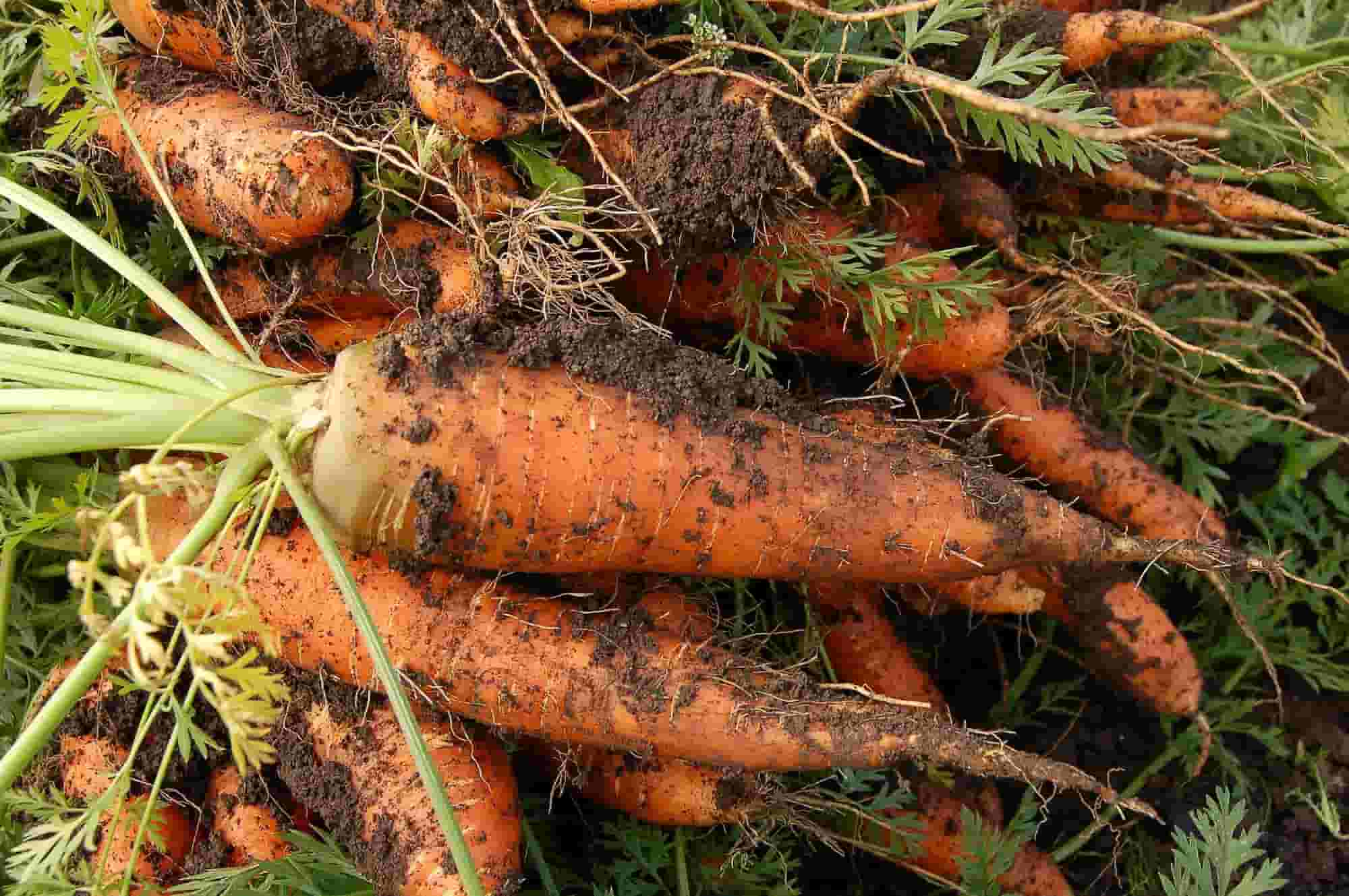
Carrot: the best varieties
Discover our selection of the best carrots to grow in the vegetable garden.
Contents
Flooded or cooked, the carrot is a staple in many menus, cherished by both adults and children for its slightly sweet flavour. In the vegetable garden, this biennial plant from the Apiaceae family, featuring a thick, elongated taproot, has specific cultural requirements. The carrot (Daucus sativus) indeed prefers humid, temperate yet sunny climates, and deeply loosened, light soils rich in organic matter and well-drained. However, due to the variety of types available, some carrots can adapt to heavier soils. Easy to grow, carrots can be sown over a long period from February to November, either directly in the ground from March to July or under unheated cover for early or late crops. Long, half-long, short, or round, the carrot boasts an impressive range of varieties. We have selected the five best varieties to favour for their flavour, colour, productivity, or adaptability.
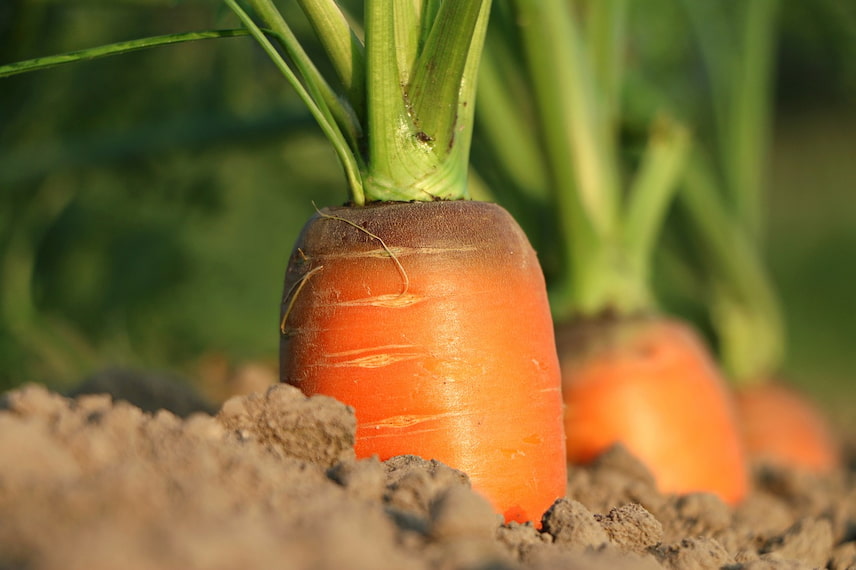
Although preferring deep, light, and humid soils, some varieties of carrots can adapt to heavier soils
The Giant Tilques Carrot with Green Petioles, the largest of them all
Here’s a carrot that reveals everything about its origins and characteristics. This heirloom variety is indeed native to Tilques, a small commune located near the marsh of Saint-Omer in northern France. As for the term “Giant”, it describes it perfectly. This is why the Giant of Tilques is included in our selection of the best carrots. Its roots reach 20 to 30 cm in length with a diameter of around 3 to 4 cm. Moreover, it has a large, tender heart and a reddish-orange flesh that makes it a delightful carrot, suitable for cooking in various ways. It is also notably fragrant.
In the vegetable garden, the Giant of Tilques carrot boasts abundant foliage that is just as impressive as the size of its roots. It is a late and very hardy carrot that is sown from May to July for a harvest spanning from July to November. It can then be easily stored in a silo, in a cellar, well nestled in sand or straw.
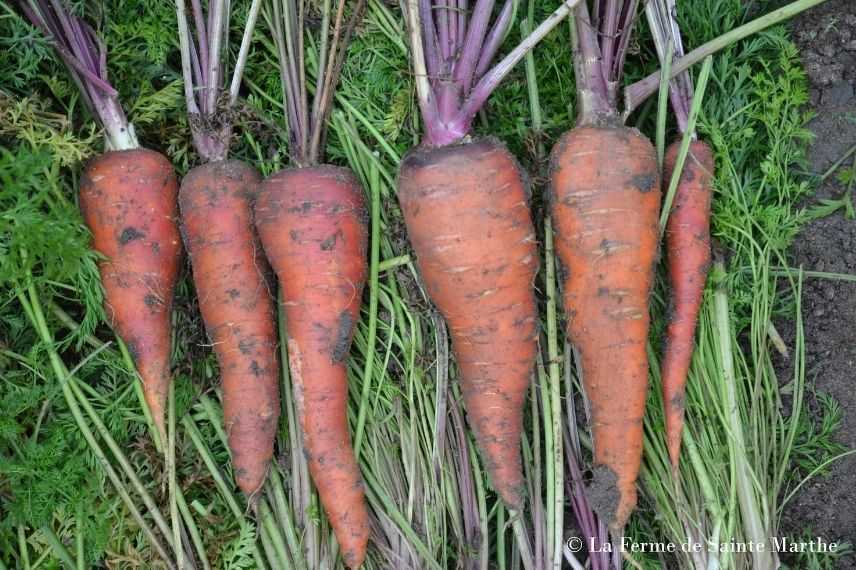
Giant Carrots of Tilques
Read also
How to choose carrots?: buyer's guideTouchon carrot with a delicate flavour
Why include this Touchon carrot, an old French variety selected in the early 20th century, in our selection? First and foremost for its exceptional flavour and lack of core. It was once known as “Touchon demi-longue sans cœur”. A characteristic that makes this carrot a model of tenderness, with smooth skin. Slightly tapered, the Touchon carrot measures on average 15 cm in length and 2.5 cm in diameter. Its flesh is reddish-orange and it boasts a high yield.
In the vegetable garden, it is an ideal carrot for early spring cultivation. Heat-tolerant, it can be sown from February until July. Harvest generally occurs 65 to 75 days after sowing. However, it does not store well in winter.
Due to its early maturity, this Touchon carrot is delicious with garden potatoes and early peas. It is also scrumptious when eaten raw and grated.
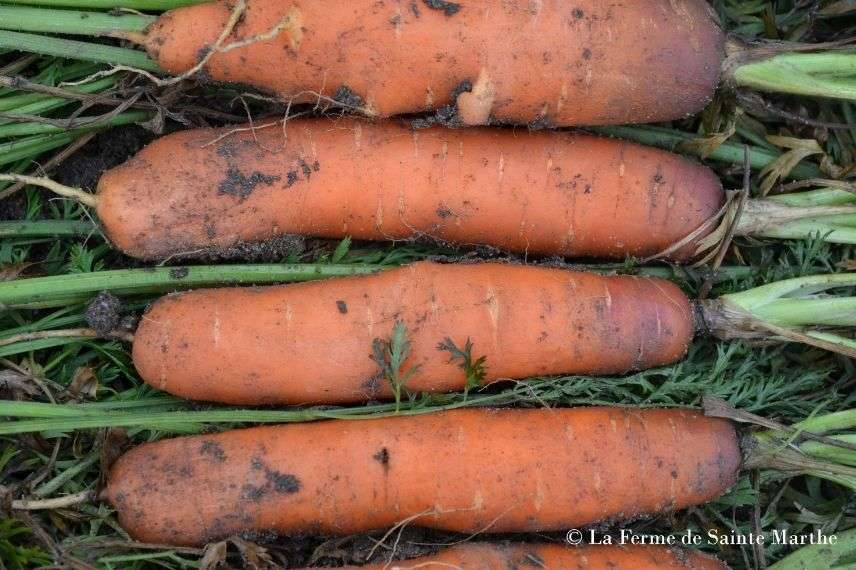
Carrot ‘Touchon’
Discover other Carrot seeds
View all →Available in 1 sizes
Available in 1 sizes
Available in 1 sizes
Available in 1 sizes
Available in 1 sizes
Available in 1 sizes
Available in 1 sizes
Available in 1 sizes
Available in 1 sizes
Available in 1 sizes
Cosmic Purple, the beautiful purple carrot
Here is a carrot that catches the eye with its beautiful purple-red skin and orange flesh, colours that remain stable during cooking. Success is guaranteed with children! A non-hybrid variety of purple carrots, the Cosmic Purple produces long, slender roots that hardly exceed 20 cm. As for its flesh, it boasts a crunchy texture and a particularly sweet, highly aromatic, almost spicy flavour.
In the vegetable garden, the Cosmic Purple carrot is both an early and seasonal variety, sown from February under cover. Sowing can continue until July. The harvest occurs approximately 70 days after sowing, from June to September. This harvest is further facilitated by robust foliage that can take on slightly purplish hues. The Cosmic Purple is not particularly suited for winter storage.
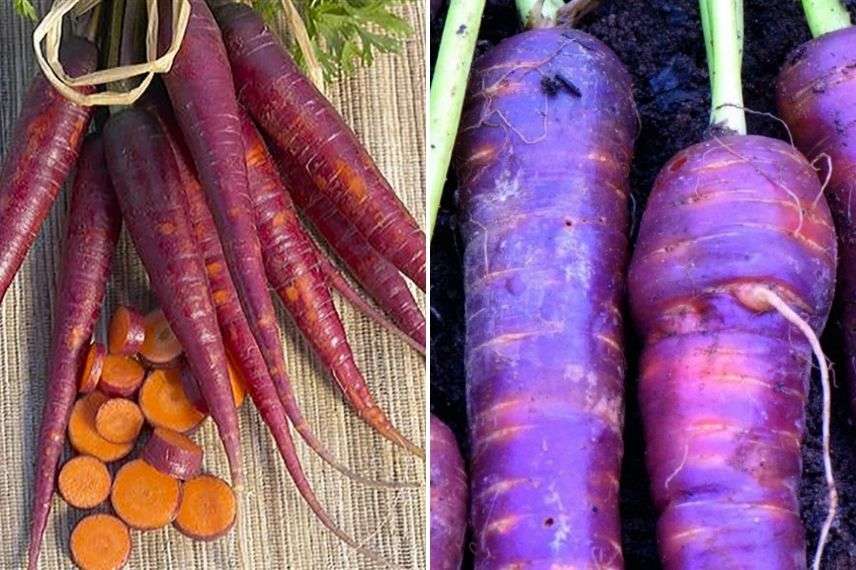
Carrot ‘Cosmic Purple’
Read also
Sowing of carrotsSaint-Valéry carrot, champion of yield
Productive, the Saint-Valéry carrot certainly is! This heirloom carrot, known for nearly 150 years, originates from Saint-Valéry, a small medieval town located in the Bay of Somme. It is distinguished by its wide collar and straight roots, approximately 25 cm long, placing it between long and half-long varieties. However, what truly characterises this Saint-Valéry carrot is its high yield compared to other carrots. Perfectly smooth, its skin is tinted a vibrant orange. As for its flesh, it is tender and dense, with a rather sweet flavour.
In the vegetable garden, it is sown from April to mid-June, and even until August in regions with milder winters. The harvest takes place from June to December. This carrot stores quite well in a silo.
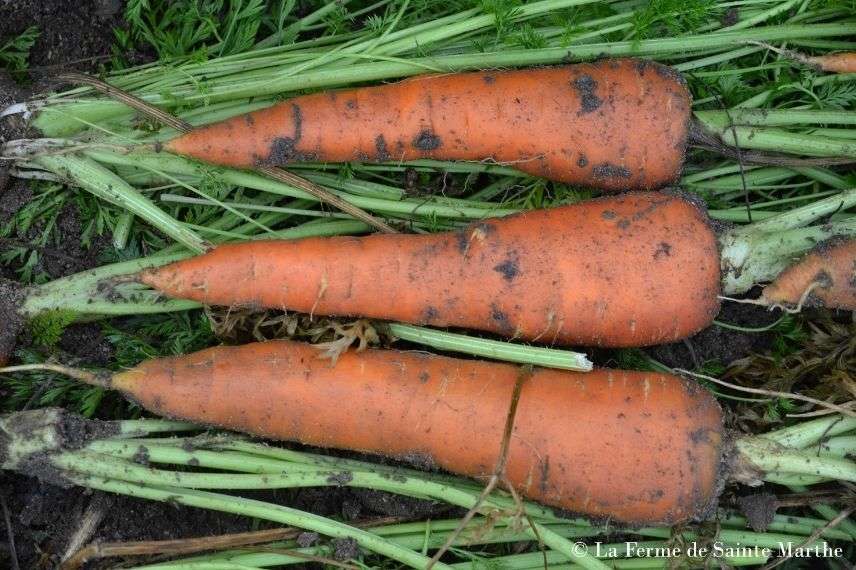
Carrot ‘Saint-Valéry’
Paris Market carrot, ideal for heavy soils
Do you have heavy, clay soil where you hesitate to even sow carrots? The Paris Market carrot, also known as the Parijse Markt, Pariser Markt, Rondo, or Mercado de Paris, will reconcile you with carrot cultivation. Simply because it is a globe-shaped carrot that grows on the surface of the soil and does not require deep soil. This very old variety of carrot, once cultivated by Parisian market gardeners, has other advantages: it is extremely early and can be sown practically all year round in a greenhouse or tunnel, including in pots or containers on a balcony! It is harvested two and a half months after sowing.
As for its flavour, it delights the most discerning palates. Indeed, this mini-carrot has sweet, brightly coloured flesh. Round and short, its root can reach 4 to 5 cm in diameter. Its fun shape makes it a star at appetizers or early vegetable dishes. Moreover, there is no need to peel it; a simple brush is sufficient.
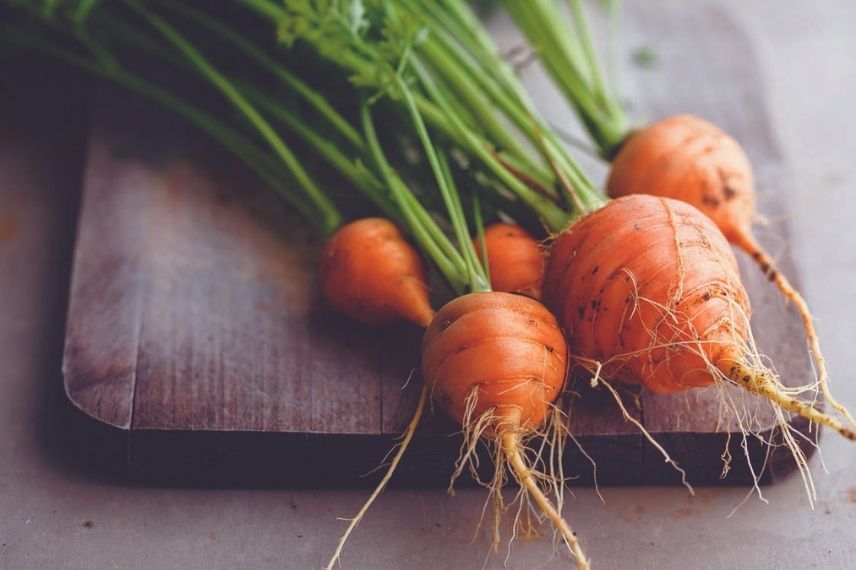
Carrot ‘Paris Market’
- Subscribe!
- Contents
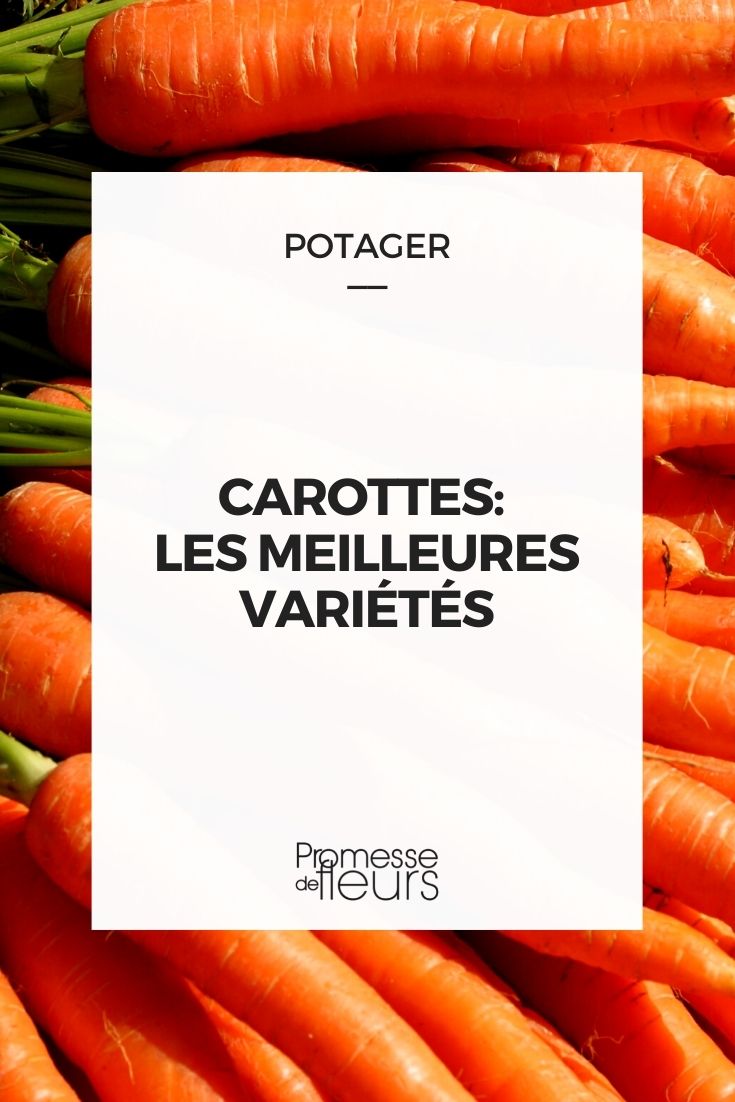































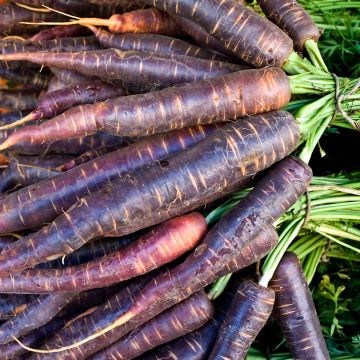
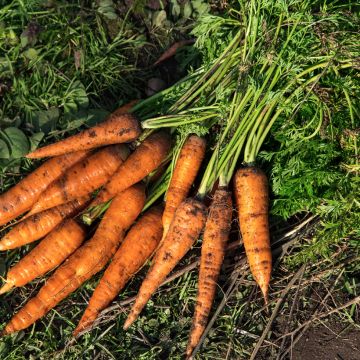
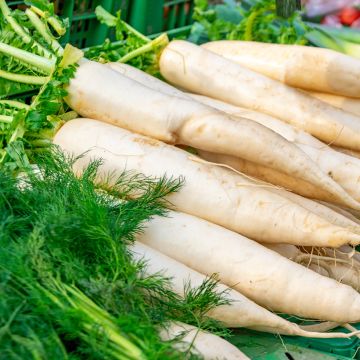
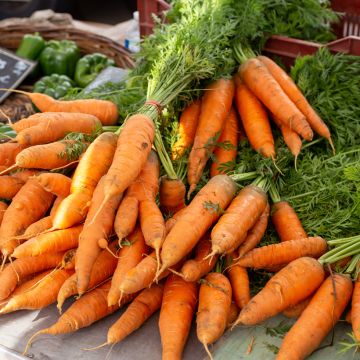
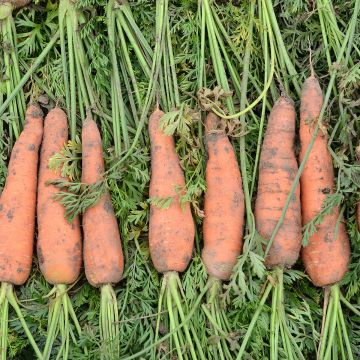
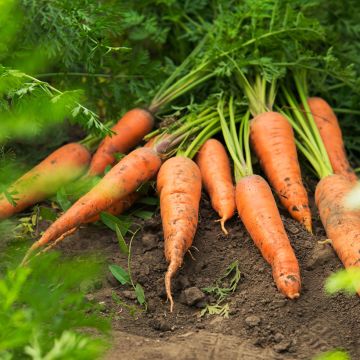
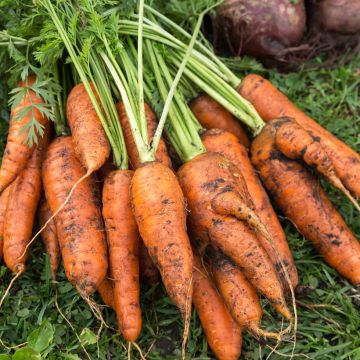
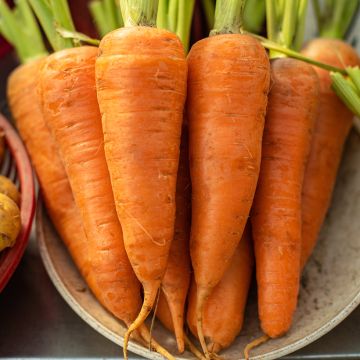
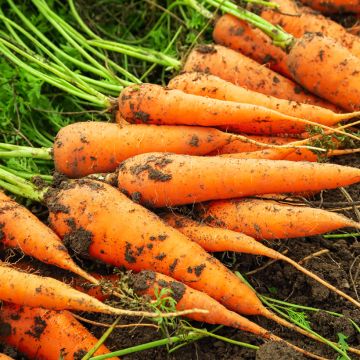
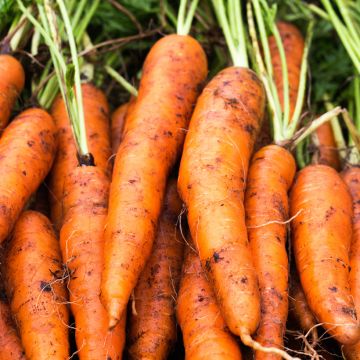
Comments